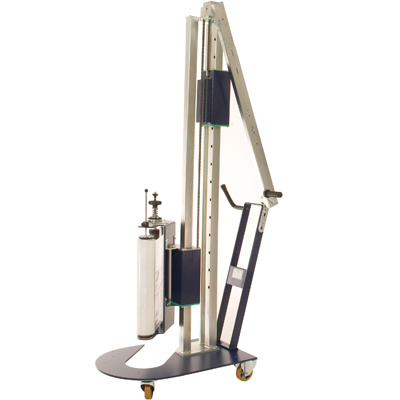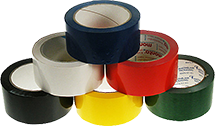If you’re shipping pallets it’s likely that you’re using some kind of stretch wrap. Upon fist inspection, pallet wrap looks pretty simple right?
In fact, when you’re choosing pallet wrap and the associated accessories there are a number of factors you need to consider, like type of film, application and roll yield for example.
What types of stretch film are there?
Blown stretch film
This type of film is made when heated resin is passed over an opening through which air is blown, sort of like making a bubble. Blown stretch wrap is characteristically strong and is suited to cold room applications.
When identifying blown stretch film, you can look for:
- Milky / dull appearance to film
- High resistance to punctures
- High noise levels when rolls are unwound
Cast stretch film
This type of film is made by extruding layers of heated resin through rollers to create a sheet of film. This process means that the film can be made with different layers. With cast film, there is often only one side of the film which is tacky / has cling.
When identifying cast stretch film, you can look for:
- Clear and glossy film
- Low noise levels when rolls are unwound
- Higher resistance to tearing
Pre-stretched film
Pre-stretched or pre-programmed film is a halfway house between cast and blown film and is usually made through co-extrusion. Pre-stretched film offers some great benefits including increased speed of wrap, better roll yield and reduced wastage.
When identifying pre-stretched film, you can look for:
- Hazy or dull appearance
- Good puncture resistance
- Can be easier to apply than traditional blown or cast films
What’s the best way to apply stretch film to pallets?
This all depends on your packing operation and the film you’re using. You’ll either apply the film manually or automatically.
If you’re applying film manually, you can do it by hand or you could use some kind of hand operated wrapping machinery. Introducing a mobile stretch wrapper for example can offer time savings and improved health and safety, as packers are no longer bending to apply film by hand.
For larger scale operations, turntables or fully automated machinery will offer efficiency, consistent wrapping and the best roll yield.
What else should be considered when it comes to stretch wrap?
As well as the type of film you’re using, you’ll want to consider core style and size, film width and roll length, plus film thickness. Remember, film thickness can range from 60mu – 30m, depending on if it’s hand or machine film.
If you need guidance when it comes to stretch wrap, thick you could make savings or want to look at some new machinery, give the Network Packaging team a call on 01902 496666. Alternatively you can email us or complete our contact form and one of our packaging experts will get in touch.














